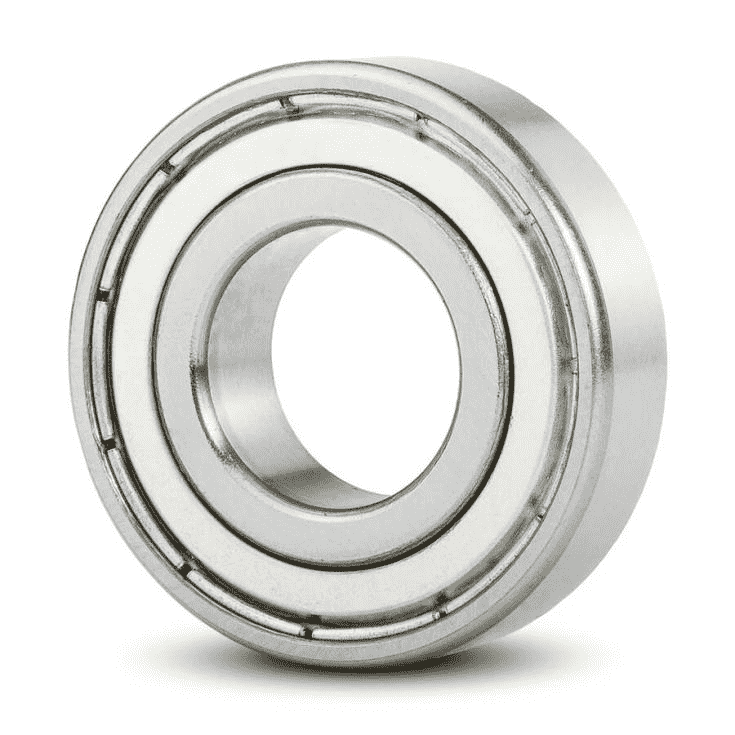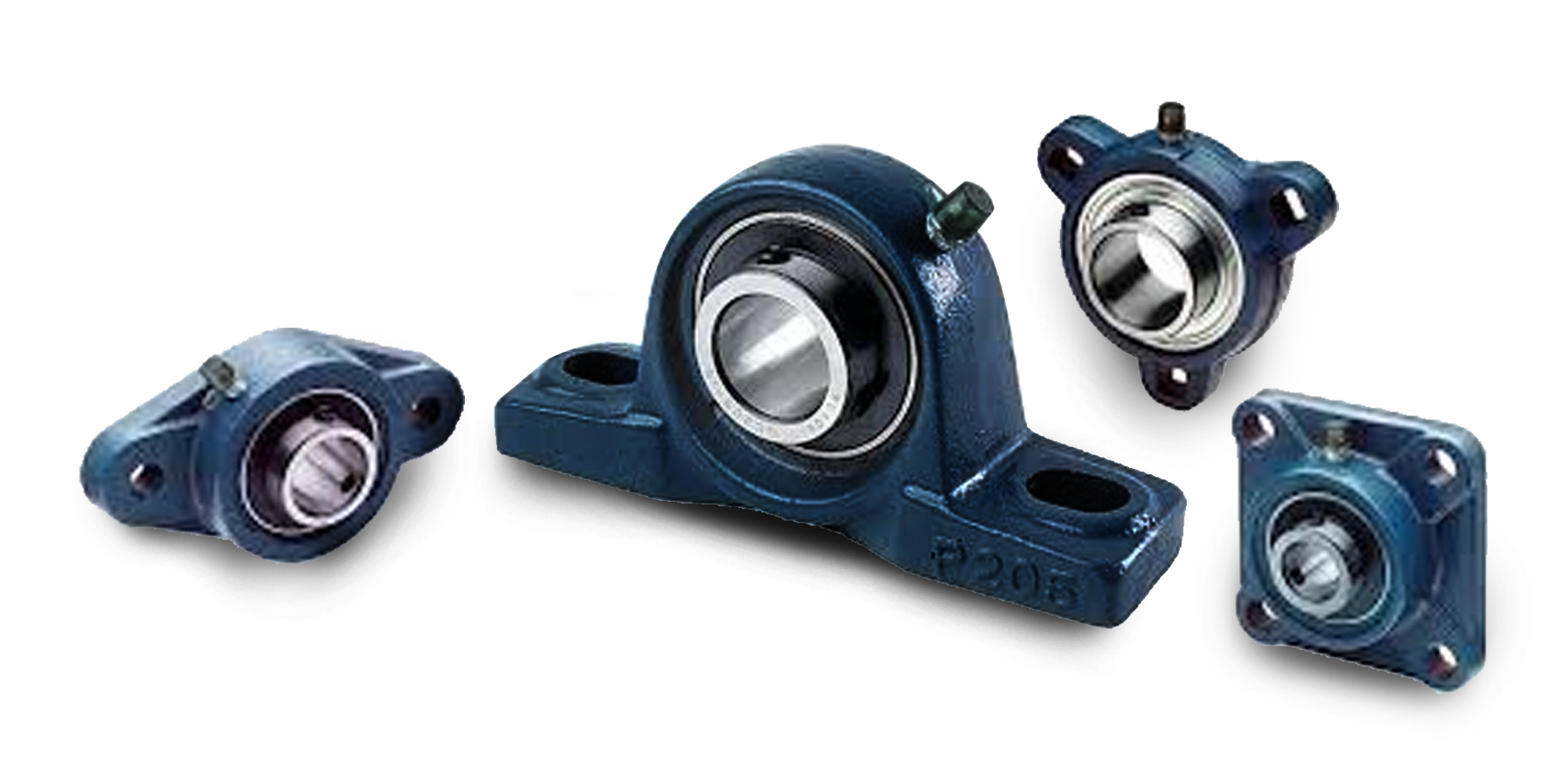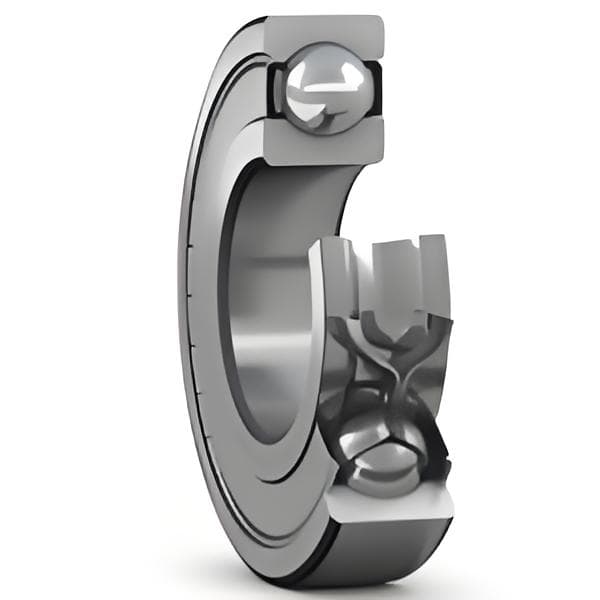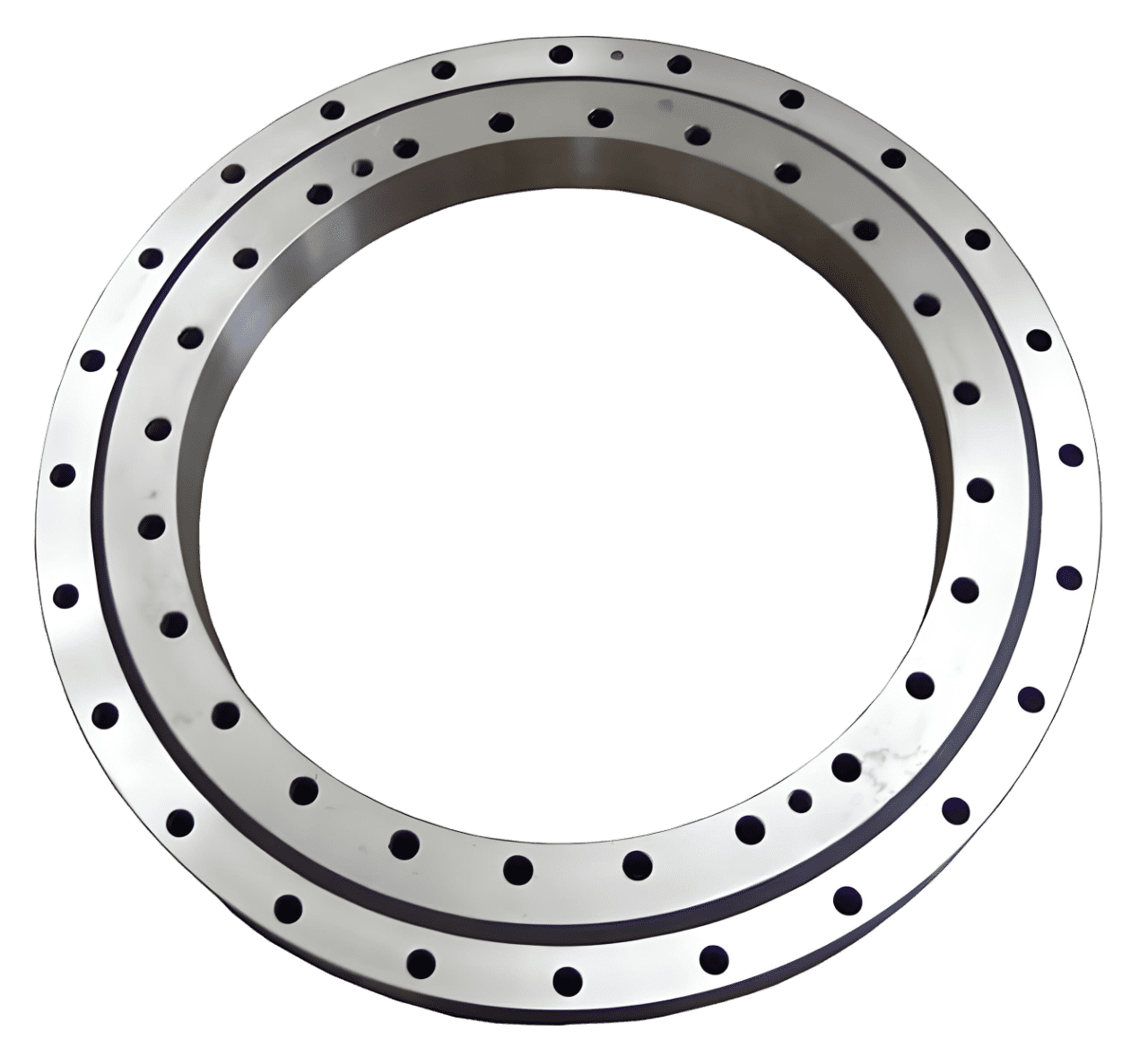Mounted Bearings Guide: Flange & Pillow Block Types
Mounted bearings are pre-assembled units that combine an insert bearing (such as a ball or roller bearing) with a housing. They are designed to...

High temperature bearings are important in many industries. They are used in equipment that works in very hot conditions. These bearings are made to handle high heat. They stay strong and reliable even in tough environments.
High temperature bearings can handle hot conditions, usually above 120°C. They are used in industries where machines work in heat, like factories and power plants. These bearings help machines run smoothly, last longer, and prevent breakdowns.
Here’s a comparison table for lubrication options for high temperature bearings:
|
Lubrication Type |
Advantages |
Temperature Range |
Common Materials/Types |
High temperature Applications |
|
Oil and Grease |
- Easy to apply |
Suitable for medium temperatures (up to ~120°C) |
High-temperature oils or special greases |
Suitable for moderate temperatures, may fail at higher temperatures |
|
Solid Lubricants |
- Won’t break down at extreme temperatures |
Suitable for high temperatures (up to 450°C or higher) |
Molybdenum Disulfide (MoS₂), Graphite, Ceramic Coatings |
Ideal for high temperatures, requires stable lubrication |
|
Dry Lubrication (No Lubricant) |
- No external lubricants needed |
Suitable for high temperatures (up to 700°C) |
PTFE (Teflon), PEEK, Graphite-based self-lubricating materials |
Extreme temperatures where traditional lubricants can’t survive |
|
Hybrid Lubrication |
- Combines the benefits of solid and liquid lubrication |
Medium to high temperatures |
Combination of solid lubricants and oils/greases |
Environments with fluctuating temperatures requiring both solid and liquid lubrication |
When selecting between ceramic and stainless steel for high temperature bearings, several factors must be taken into account:
Zirconia high-temperature bearings are made from a strong ceramic material. They can handle high heat without losing strength. They are also resistant to wear and corrosion, making them perfect for harsh environments with heat and chemicals.
These bearings are used in industries like aerospace , chemical processing, and automotive, where extreme conditions are common. Their durability makes them a trusted choice for tough applications.
Silicon nitride high temperature bearings are strong, lightweight, and work well in heat. They are capable of withstanding temperatures up to 1000°C (1832°F). This makes them perfect for high-heat applications like gas turbines and jet engines in aerospace.
The low friction helps them last longer and use less energy, which is great for fast-moving parts in motors, robots, and electric cars. Their light weight also improves speed and reduces vibrations in machines like drones and motors. These bearings are a top choice for tough environments that need high performance and reliability.
Silicon carbide (SiC) high-temperature bearings are highly robust and resilient. They can endure extreme temperatures as high as 1600°C (2912°F). They are also highly resistant to corrosion. This makes them perfect for tough environments like industrial furnaces, chemical plants, and aerospace.
With low friction and excellent wear resistance, these bearings last longer and perform well even in harsh conditions. Their ability to handle both high heat and chemicals makes them a reliable choice for demanding industries.
Hybrid ceramic bearings mix ceramic balls with metal races, giving a good balance between high temperature performance and cost. The ceramic balls handle heat well and reduce friction, making them ideal for high temperatures. The metal races contribute to reducing the cost compared to full ceramic bearings.
These bearings last longer and perform better than regular metal bearings, but are more affordable than all-ceramic ones. They are perfect for uses like in cars, machines, and electric motors where both heat resistance and cost matter.
Hybrid ceramic bearings reduce friction because the ceramic balls are smoother and harder than steel balls. This results in less resistance and wear. The ceramic balls also help the bearing run cooler and more efficiently.
These bearings can work in temperatures up to 660°F (350°C) because the ceramic material can handle heat. The metal races provide strength at a lower cost than full ceramic bearings. This makes them ideal for medium to high-temperature applications. They are particularly useful in electric motors or machines, where full ceramic bearings would be too expensive.
Hybrid ceramic bearings are used in many places where heat resistance and low cost are important. They are found in electric motors, where they help the motor run faster and have a long service life.
In pumps, they minimize wear and ensure smooth operation. In cars, they are used in engines, turbochargers, and gearboxes to improve performance at a lower cost. In machines like conveyors and compressors, they reduce energy loss and help the equipment last longer. They are also used in farming equipment, performing well in tough conditions while keeping costs low.
Stainless steel bearings are often used in moderate high-temperature applications. They can endure temperatures up to 500°F (260°C) while maintaining their strength.
They are also resistant to rust and corrosion. This makes them ideal for environments with moisture or chemicals. Examples include food processing and water treatment applications.
Stainless steel bearings are strong and durable. They work well in machines that run in medium-heat conditions, like automotive or HVAC systems. Their heat and corrosion resistance make them a reliable and cost-effective choice for many industries.
Stainless steel bearings are often used in food processing because they can handle moderate heat. They are also easy to clean, making them ideal for hygienic environments. These bearings are commonly found in conveyor systems, which move food products during production.
They can work in temperatures up to 500°F (260°C) without breaking down. Stainless steel also resists rust and corrosion, so it won’t contaminate the food. These bearings are also used in mixers, blenders, and packaging machines, where hygiene and reliability are very important. Their durability and resistance to corrosion make them perfect for the food industry.
Bearings with a molybdenum disulfide (MoS₂) coating help reduce friction in high-temperature environments. MoS₂ forms a thin layer on the bearing, acting as a solid lubricant. This allows the bearing to operate smoothly without relying on liquid oil, which can degrade at high temperatures.
This coating allows the bearing to work in temperatures up to 750°F (400°C) by reducing friction and wear. MoS₂-coated bearings are used in industries like aerospace, automotive, and machinery. These industries require high heat resistance and reliable performance. The coating helps them last longer and work better in extreme conditions.
Molybdenum disulfide (MoS₂)-coated bearings are ideal for environments where regular lubrication doesn’t work because of extreme heat. They are also suitable for situations where contamination must be avoided. In kilns and ovens, where temperatures are high, normal oils would break down. However, the MoS₂ coating keeps the bearings running smoothly without the need for liquid lubricants.
This makes them ideal for industries like ceramics, metalworking, and food processing, where cleanliness is important. The MoS₂ coating ensures the bearings last longer and perform well in these tough, high-temperature environments.
MAX 150°C (302°F) alloy steel bearings are designed to withstand moderate temperatures. They have a maximum heat tolerance of 150°C (302°F). They use a graphite lubricant to reduce friction and keep the bearings smooth. The manganese phosphate treatment helps prevent wear and rust, making the bearings last longer.
These bearings are used in industrial machines, automotive parts, and HVAC systems like fans, pumps, and conveyor belts. They work well in moderate heat and remain reliable. The combination of lubrication and treatment ensures they are durable and efficient in these environments.
MAX 200°C (392°F) alloy steel bearings are made to handle higher temperatures up to 200°C (392°F). They use graphite-based lubrication to reduce friction and keep things running smoothly, even in high heat. The graphite also works as a solid lubricant, which is useful when liquid oils can’t be used. These bearings also have a surface treatment like manganese phosphate coating that helps prevent wear and rust, making them last longer.
These bearings are often used in industrial machines, motors, pumps, fans, and conveyor systems. They are especially suited for environments where the temperature can reach up to 200°C (392°F). Their ability to perform well in heat and tough conditions makes them reliable and durable for industrial use.
MAX 250°C (482°F) alloy steel bearings are built to handle high temperatures up to 250°C (482°F). They use graphite lubrication, which helps reduce friction and keep the bearings running smoothly, even in extreme heat. The bearings have a manganese phosphate coating. This makes them more resistant to wear and corrosion, helping them last longer.
These bearings are used in automotive engines, industrial machines like motors and pumps, HVAC systems, and construction equipment. They perform well in high heat and tough conditions. This makes them ideal for industries with extreme temperatures and heavy use.
MAX 350°C (662°F) alloy steel bearings are built to handle very high temperatures, temperature up to 350°C (662°F). They use graphite lubrication to reduce friction and keep the bearings running smoothly. This is effective even when regular oils can’t handle the heat. The manganese phosphate coating makes the bearings more resistant to wear and rust, helping them last longer.
These bearings are used in aerospace, industrial furnaces, oil & gas, and heavy machinery. Their ability to perform in extreme heat makes them ideal for tough industries.
High temperature bearings are important in automotive engines and exhaust systems. They can handle the extreme heat produced by the engine.
These bearings are used in parts like turbochargers, which spin at high speeds and need to stay smooth despite the heat. They are also used in engine components like pistons and valve trains. The heat resistance ensures that everything functions smoothly.
In exhaust systems, bearings are needed in parts like EGR valves and catalytic converters, which also work in high heat. These bearings are made from materials like ceramic or stainless steel to resist heat and wear, ensuring the parts last longer and perform well.
Bearings in food-grade environments need to handle high temperatures while staying clean and safe. In food processing plants, machinery such as ovens and dryers can reach temperatures exceeding 200°C (392°F). The bearings must be able to withstand this heat. Stainless steel bearings are often used because they resist rust, can handle heat, and are easy to clean, making them perfect for food processing.
These bearings are found in parts like fans and conveyor belts in ovens and dryers. They use high-temperature lubricants like graphite to keep things running smoothly without breaking down.
Sealed bearings are also used to keep food particles and moisture out, ensuring the equipment stays clean and works well. These special bearings are essential for maintaining machines like baking ovens, drying machines, and cooling conveyors. They ensure the safe and efficient operation of these machines.
High temperature bearings are crucial in both aerospace and furnace operations. They can withstand extreme heat while maintaining reliable performance.
In jet engines, temperatures can reach over 1,000°C (1,832°F), and bearings need to survive this heat and high speeds. Ceramic bearings or hybrid bearings, which have ceramic balls, are often used in these conditions. They reduce friction and last longer under high temperatures.
In heat treatment furnaces, used to harden or shape metals, bearings need to work in temperatures up to 1,200°C (2,192°F). Bearings with graphite lubrication or ceramic materials are used in parts like fans, shafts, and conveyors in furnaces.
They contribute to the smooth operation of the system. These high temperature bearings are essential for aerospace operations. They also keep furnace machines running safely and efficiently in extreme heat.
High temperature bearings are built to handle extreme heat by using special materials and designs. Ceramics like silicon nitride and zirconia are used because they can withstand very high temperatures without breaking down. Stainless steel and hybrid bearings (which combine ceramic balls and metal races) offer strength and heat resistance.
These bearings also use solid lubricants like graphite to reduce friction in high heat, since regular oils would melt or burn away. Special coatings, like manganese phosphate, protect the bearings from wear and rust. These features help high temperature bearings work reliably in tough conditions like jet engines, furnaces, and automotive engines.
High temperature bearings are made with special materials and lubricants. These materials last longer in extreme heat and reduce maintenance. Some bearings use solid lubricants like graphite.
Graphite remains effective in high temperatures and doesn’t need frequent replacement. Other bearings are self-lubricating. They are made from ceramics or hybrid materials with low friction, so no lubrication is needed.
The use of durable materials like ceramics or stainless steel makes these bearings last longer. This reduces the need for frequent replacements. This design helps lower maintenance time and costs, making them perfect for tough, high-heat environments.
High temperature bearings help save money by cutting maintenance costs and increasing operational uptime. These bearings often use solid lubricants or are self-lubricating. As a result, there’s no need to change or add lubricants regularly.
This lowers the cost of maintenance and labor. The materials used, like ceramics or stainless steel, are durable and resist wear. As a result, the bearings last longer and require fewer repairs or replacements.
Since high temperature bearings can handle extreme heat without breaking down, they keep machines running for longer periods. This means fewer breakdowns, less downtime, and higher productivity. Overall, these bearings help businesses save money by reducing maintenance needs and increasing the time their machines are working.
High temperature bearings are made to work in hot conditions without breaking down. They are robust, utilize specialized lubricants, and require minimal maintenance. These bearings are used in areas like aircraft engines, car engines, furnaces, and food processing. They help reduce repairs and keep machines running longer.
To choose the right high temperature bearing, think about the heat, load, and lubrication needs. For high heat, pick ceramic or hybrid bearings.
Stainless steel is highly effective for applications involving moderate heat. If lubrication is hard, go for self-lubricating bearings or ones with solid lubricants like graphite. For corrosion resistance, choose stainless steel or ceramic. For high speed, ceramic or hybrid bearings are best.
For the best high temperature bearing for your needs, talk to an expert. Request a consultation or explore our full range of bearings on our website. We are here to assist you in finding the appropriate solution.

Mounted bearings are pre-assembled units that combine an insert bearing (such as a ball or roller bearing) with a housing. They are designed to...

Since 1937, McGill has been a leader in creating innovative bearings that resist contamination. These bearings are crucial to industries like...

Removing a bearing from machinery is a critical task that can influence the longevity and performance of both the bearing and the equipment itself....